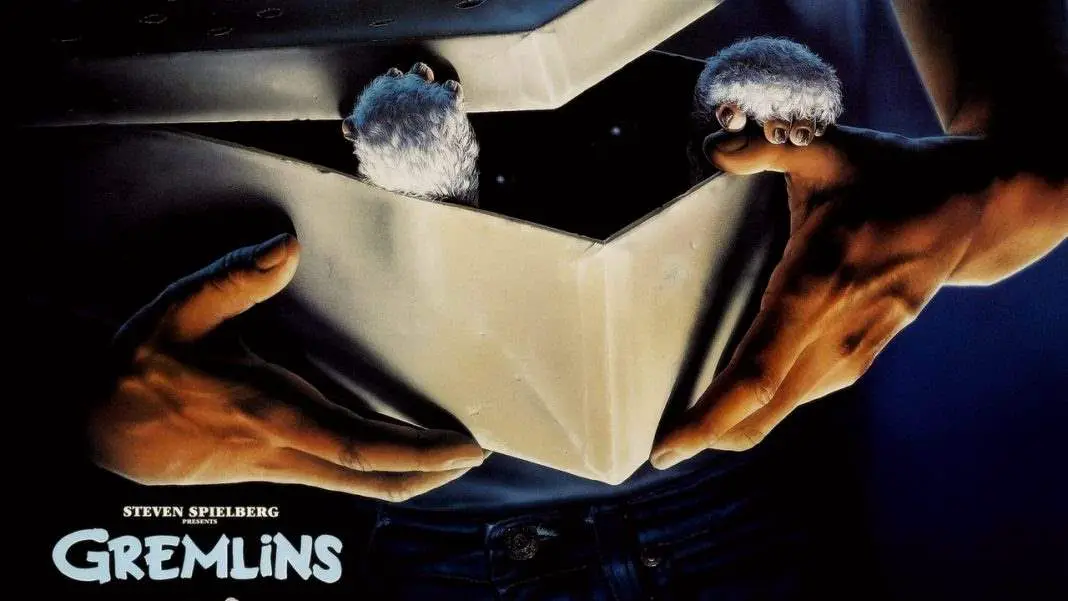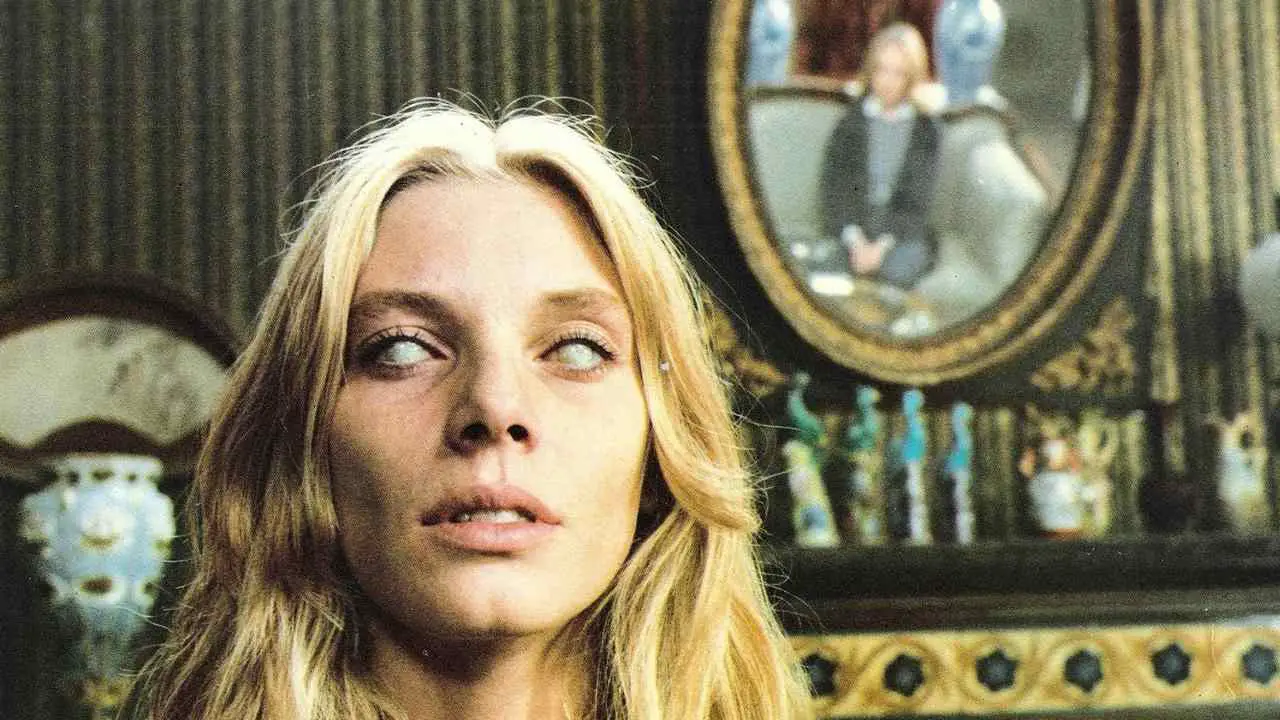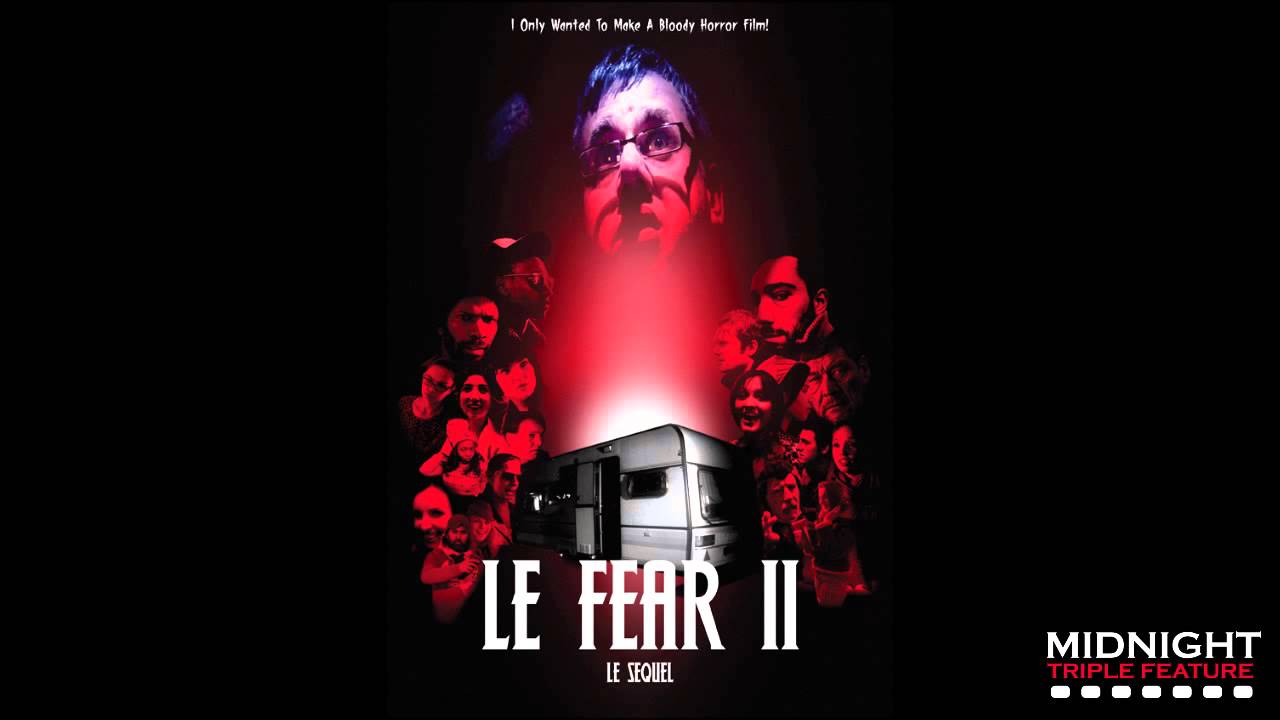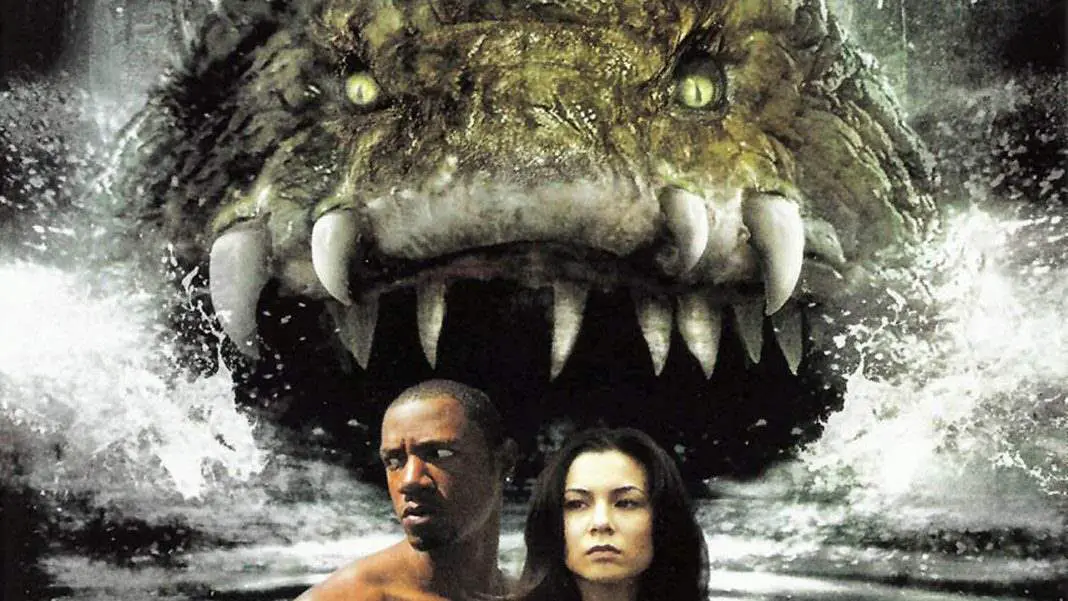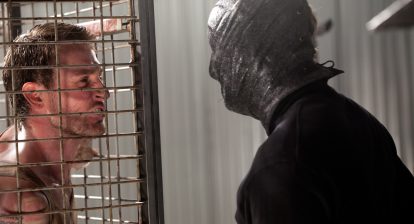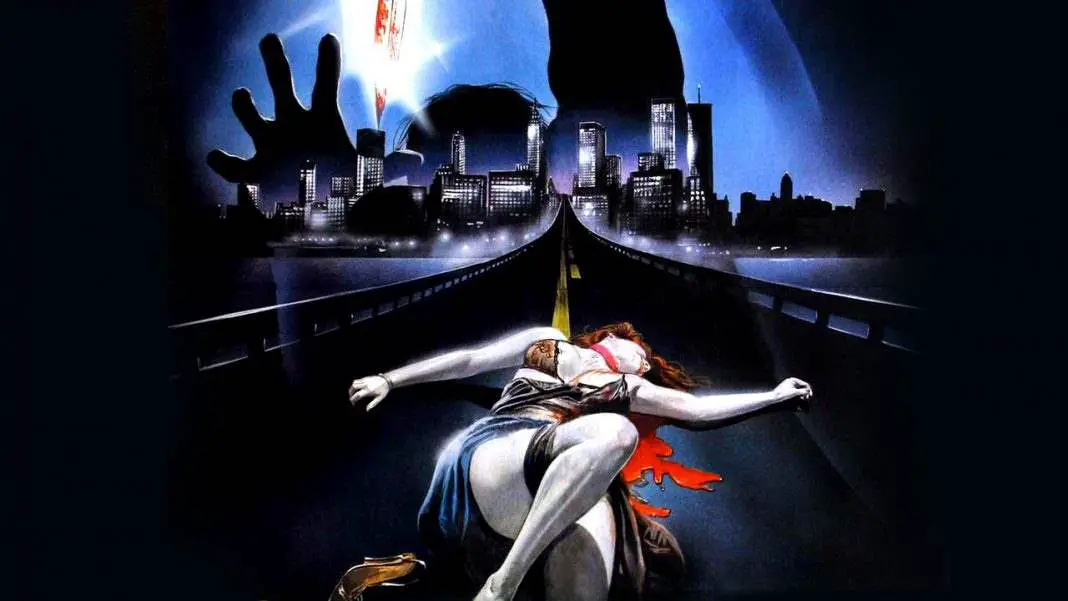Gremlins is widely regarded as one of the most beloved horror-tinged family films of all time. It’s a fun, exciting adventure movie as well as a holiday classic. Of course, it has its suspenseful moments and is focused on a horde of devilish, little monsters but the main goal of it is for the audience to have fun. It’s a feature about recapturing the feel of a Norman Rockwell painting. It portrays picturesque 1950’s Americana in the 1980’s, and comments on things like commercialism and our society’s over-dependence on technology.
The gremlins themselves can be unnerving to a child, but even in monstrous form they have a strong sense of humor. They’re the antiheroes of the movie, given much more screen time than a creature is usually granted in this kind of monster epic. The feature goes out of its way to show the gremlins laughing and having fun as much as it shows them attacking people because the people behind it—particularly Stephen Spielberg—did not want any risk of children being afraid of what they were seeing on the screen. There may be some dark bits in the finished product, but many of them seem almost accidental.
Originally, however, things were going to be very different. The original script by Chris Columbus is almost the complete opposite of what wound up on the screen, especially in terms of tonality. The film was originally written as a straightforward horror movie. It started out the same, with Billy getting the mogwai as a present. But the script saw more large-scale destruction of the town itself and a much higher body count. In this version, both Billy’s dog and his mother were killed.
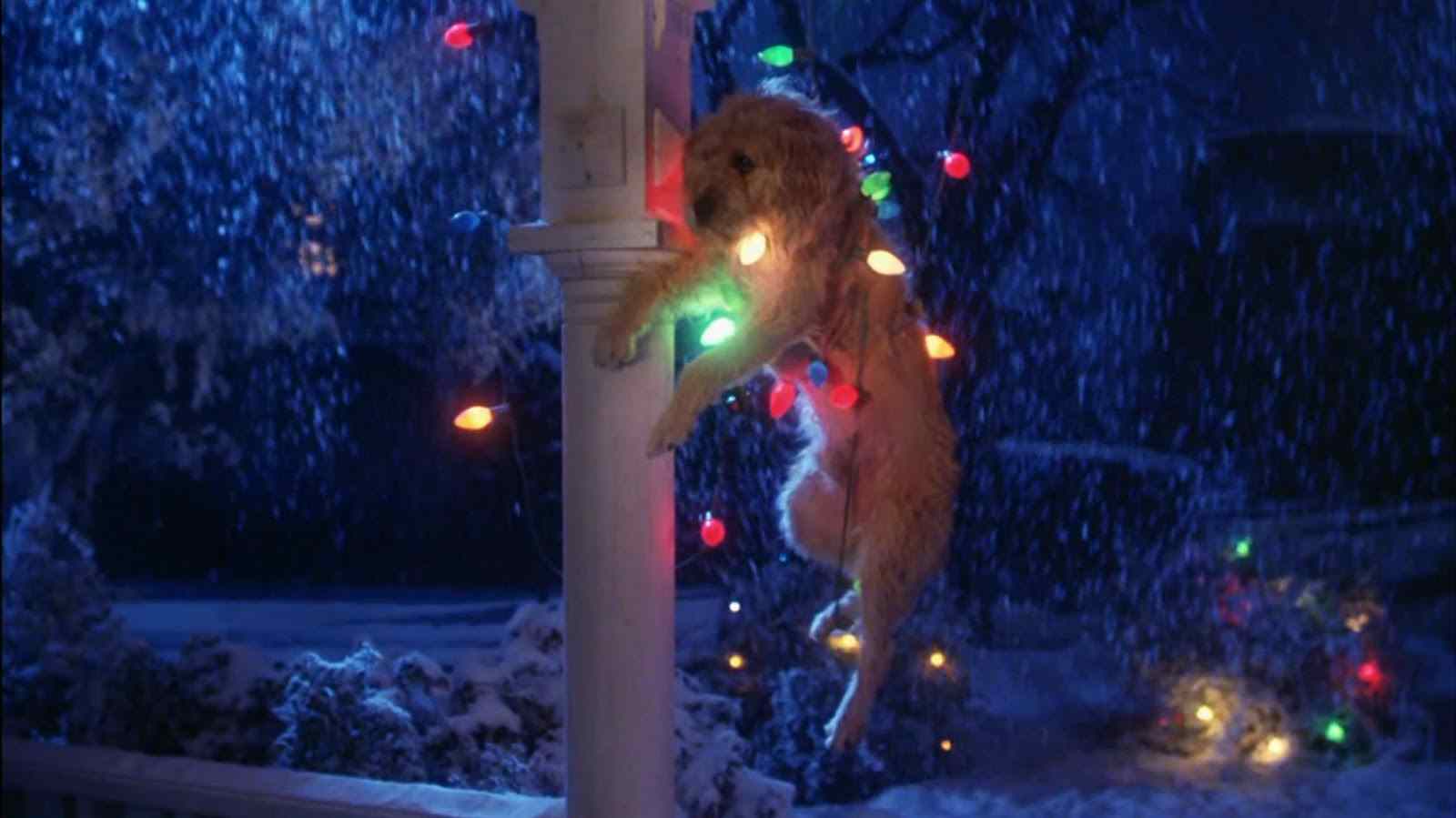
Mrs. Peltzer’s showdown with the gremlins in the kitchen went much worse for her in the original draft of the screenplay. Like the finished movie, Billy realizes that his mother is alone in the house with the little monsters and rushes home to save her. But originally, he was supposed to find his mother’s severed head bouncing down the stairs.
The biggest change of all, though, came in the form of the movie’s two primary little characters: Gizmo, the furry hero and Stripe, the menacing gremlin leader. In Columbus’ first script these two were the same character. There essentially was no Gizmo. There was just one character, named Mogwai, that starts out furry and cute and then becomes the terrifying leader of the Gremlins.
 It makes sense why Joe Dante was offered the job directing Gremlins while it was still working with this version of the script. It was a straightforward horror film and Dante had proven himself as a competent horror director.
It makes sense why Joe Dante was offered the job directing Gremlins while it was still working with this version of the script. It was a straightforward horror film and Dante had proven himself as a competent horror director.
While it was Spielberg’s people who optioned the script, the legendary director didn’t become too involved with the film until after Dante came onboard. Once Spielberg began to take a more hands-on role, Gremlins began to change. One of the first things Spielberg wanted to scrap was the idea of the cuddly pet becoming the monster.
He wanted a creature that audiences would not only enjoy, but would adore. He wanted them to create a monster so cute that people would wear it on T-shirts and pillows and hang it on their car windows with little suction cups. Spielberg wanted a merchandising icon and so Gizmo was born.
 From there, the entire movie began to lighten. There was still carnage and there would still be deaths, but nothing as drastic as Mrs. Peltzer’s head bouncing down the stairs. It retained the horror elements, but it quickly changed to embrace its PG rating. While the first script did have a sense of humor, it was very dark. A good way to determine the tone of the original script versus the finished film is the speech Phoebe Cates gives about how she learned there was no Santa Claus. In the final cut, it feels almost out of place. It’s jarring and comes out of nowhere. In the original script, it encapsulates the bleakness of that story. As it stands now, I think it does manage to encapsulate the entire tone, which is funny one moment, scary and dead serious the next.
From there, the entire movie began to lighten. There was still carnage and there would still be deaths, but nothing as drastic as Mrs. Peltzer’s head bouncing down the stairs. It retained the horror elements, but it quickly changed to embrace its PG rating. While the first script did have a sense of humor, it was very dark. A good way to determine the tone of the original script versus the finished film is the speech Phoebe Cates gives about how she learned there was no Santa Claus. In the final cut, it feels almost out of place. It’s jarring and comes out of nowhere. In the original script, it encapsulates the bleakness of that story. As it stands now, I think it does manage to encapsulate the entire tone, which is funny one moment, scary and dead serious the next.
Ultimately, things probably worked out for the best. Steven Spielberg knows how to appeal to the widest possible audience more than virtually any other living filmmaker. He made changes to make the movie more successful and it worked. Gremlins was a huge commercial success. It also gave Joe Dante more opportunities as a director.
He had a major mainstream blockbuster under his belt and was able to direct a wider range of features than Piranha and The Howling had offered him. He may never have been able to make movies like The ‘Burbs or Matinee if it hadn’t been for Gremlins. Still, it’s fun to think about the picture that could have been. A dark, haunting little creature feature about the destruction of small-town America. But that kind of thing isn’t terribly accessible, and Gremlins definitely is.
This film was transformed during its production; it went through a complete metamorphosis. It is almost the reverse of the creature transformations in the movie. Instead of going from something cute and cuddly to something dark and ugly, it went from something dark and ugly to something cute and cuddly. In doing so, it became a quintessential family horror and has been cherished ever since.
